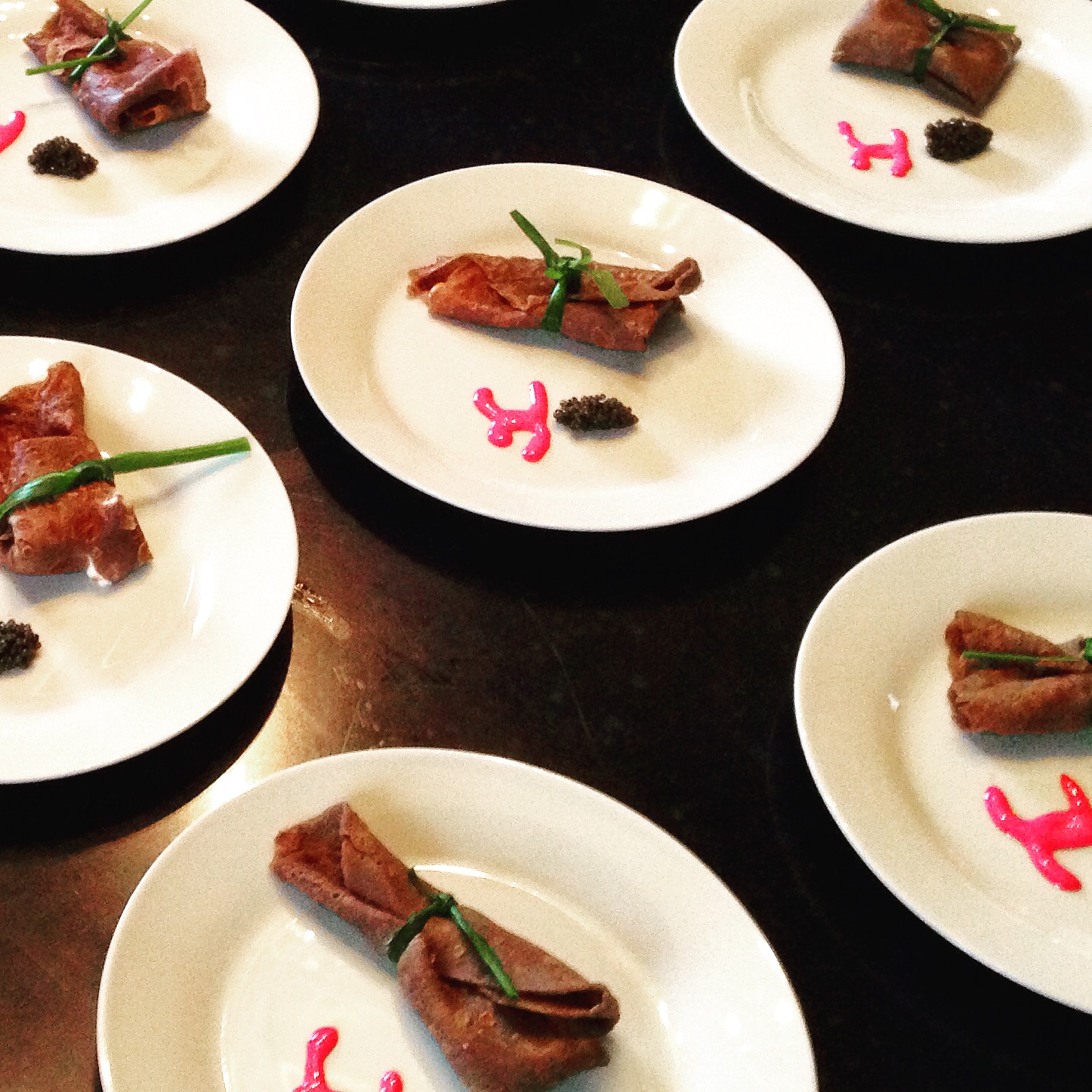Back in the days when I was toiling away in the kitchen at San Domenico NY, we used to have some regular VIP clients who would come in and order "off menu" as it's called -- requesting favorite dishes that were neither daily specials, nor a part of the restaurant's written menu. These items are usually part of the culinary canon that the restaurant represents. In the case of San Domenico, it was Italian classics, mostly hailing from the north of Italy, like our executive chef. Our most (in)famous VIP client to order off-menu was one Signor Bulgari, of the world-renowned, Rome-based Bulgari jewelry house.
Bulgari holds a special place in the hearts of Romans, in particular. The brand is known for its impressive jewels and even more impressive price tags. I've heard, on any number of occasions, Romans referring to something that was shockingly expensive as being Bulgari: as in, "so I picked up these little Sicilian tomatoes and a bag of organic arugula da Bulgari..." It is Roman slang for saying that the precious gem of an item you purchased was paid for through the nose...but probably worth the indulgence.
So, the irony of cooking for Signor Bulgari, off-menu, making his favorite dishes -- a big plate of sliced San Daniele prosciutto, a dish of Maria's famous caponata, and a platter-sized, paper-thin pounded veal Milanese topped with the aforementioned gorgeous cherry tomatoes and arugula -- was not lost on me. The fact that he would boorishly push open the swinging doors to the kitchen from the dining room, asking where his food was after having to wait an entire ten minute stretch, post-order, and that he'd fight the waiter on the bill claiming overcharge on most visits, is just the icing on the torta: the man whose surname is synonymous with pricey didn't like to pay our prices on his special orders. Ha. But luckily, we always knew when he was coming. Forewarned is forearmed. And after a perfectly-prepared Milanese, all is right with the world. Even with Signor Bulgari.
The Milanese is a go-to meal of mine at home, as well. It's comfort food in cooler months, just on its own with some hearty side dishes, but it's at its best now: as in, during the summer months when the tomatoes are bursting with sweetness and taste of the sun, and the peppery bite of the arugula is matched by that of the olive oil drizzled atop this salad, which is then cut with some real balsamic vinegar from Modena. That's the stuff, right there. The veal (or chicken, or turkey) is pounded extra thin, dusted with flour and dipped in organic eggs, and the breading -- this is key -- is a mix of bread crumbs, panko, herbs, and grated parmigiano cheese, which forms a thin, molded crust and keeps the meat juicy within. You need to cut this with a steak knife because it deserves precision. This should not be torn or shredded, but treated with reverence. Because it's deceptively simple, and when prepared well, like most Italian classics, the Milanese is a thing of beauty.
















































































































































































